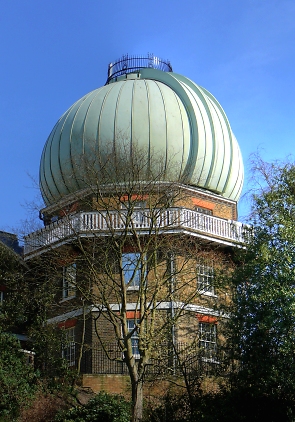|
|
 |
|
Greenwich
|
 |
|
The heart of Britain’s naval and astronomical heritage,
Greenwich lies on the south shore of the Thames, opposite the Isle of Dogs. Unlike most entries in Hidden London, Greenwich
is on the tourist trail, of course, but it merits inclusion because it’s some way from the city centre. The name
means ‘green trading settlement’. It is likely that the Romans established some kind of settlement here, but little
is recorded until 1012, when the Danish fleet moored here and Archbishop Alphege was brutally murdered. In 1427 Humphrey,
duke of Gloucester built himself a riverside house named Bella Court. After the duke’s death Margaret of Anjou, wife
of Henry VI, enlarged the house and renamed it Placentia, or ‘pleasant place’. Henry VII made the new palace even
grander and it became a favourite royal resort. The future Henry VIII was born here in 1491 and made further elaborate improvements
to Placentia. Elizabeth I was also born at Greenwich and spent much time at the palace. The Royal Naval College, designated
a world heritage site by the United Nations, was originally intended as a new palace for Charles II, to replace Placentia.
The National Maritime Museum, the largest maritime museum in the world, opened in 1937 incorporates the Queen’s House,
built in 1635 by Inigo Jones for Charles I’s queen, Henrietta Maria. It was subsequently redeveloped as a naval hospital
by Wren and successors over a period of fifty years from 1695. A ‘Greenwich goose’ was a resident pensioner here.
In 1873 the Royal Naval College moved here from Portsmouth. The college became the centrepiece of the University of Greenwich
in 1999. The Millennium Dome in North Greenwich was Britain’s most visited – and vilified – paying attraction
in 2000. It is presently being redeveloped as an events venue. Greenwich Market was established and granted a Royal Charter
in 1849. With 160 stalls, it claims to be London’s best source for handcrafted items. Other Greenwich attractions include
the Cutty Sark and Gipsy Moth IV, the Fan Museum and the late seventeenth century Ranger’s House.
Greenwich Theatre is on Crooms Hill, where the poet
Cecil Day-Lewis lived in the 1950s.
|
 |
|
|
|
 |

|
| The Old Royal Observatory, founded in 1675, is perched at the highest point in Greenwich Park |
The rock band Squeeze emerged from Greenwich in the mid-1970s. Their songs are peppered with south London references – in the case of King
George Street, to Greenwich itself. In March 2010 members of the band unveiled a commemorative plaque at Greenwich Borough Hall.
|
 |
|
|
|
|
|
Postal district: SE10
Population: 21,383 (Greenwich West and Peninsula wards)
Station: South Eastern and Docklands Light Railway, Lewisham branch (Zones 2 and 3)
Riverboat pier: Greenwich
Further reading: Charles Jennings, Greenwich, Little, Brown & Company, 1999
and Clive Aslet, The Story of Greenwich, Fourth Estate, 1999
Text and selected images are reproduced with the permission
of Chambers but may differ from the published versions
All content © 2005–2010
|
|
|
 |

